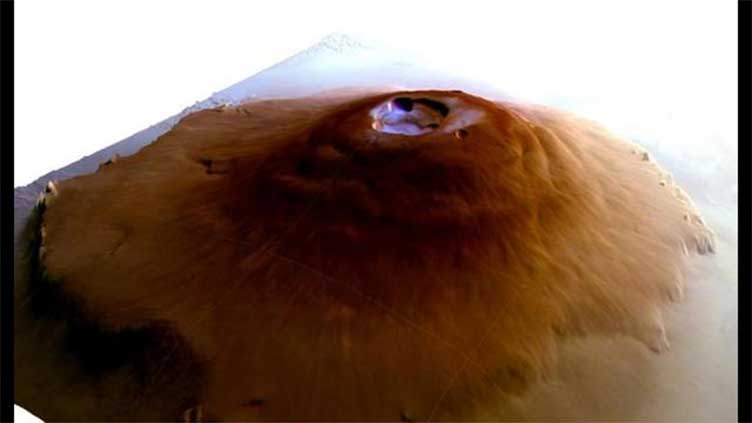60 Olympic swimming pool-sized water frost found on Mars' tallest volcano

Technology
Researchers just discovered water frost on Mars’ volcanoes, which are tallest in solar system
(Web Desk) - Scientists have confirmed that the Tharsis volcano on Mars contains a layer of frost as thin as a hair follicle.
Scientists had discovered water on Mars back in 2008. Most of it is thought to exist in ice patches around the planet’s poles and beneath its surface.
However, the scientists from Brown University did not expect to find frost near the equator.
After analyzing over 30,000 images, a team from Brown University confirmed that the Tharsis volcanoes contain a layer of frost as thin as a hair follicle which evaporates after sunrise.
The significance of the discovery
The study might lead to new understandings of the planet’s climate systems and how water behaves.
In turn, that might impact future explorations as and our method for searching for signs of life.
Adomas Valantinas, Postdoctoral fellow at Brown University, said, “We thought it was improbable for frost to form around Mars’ equator, as the mix of sunshine and thin atmosphere keeps temperatures during the day relatively high at both the surface and mountaintop — unlike what we see on Earth, where you might expect to see frosty peaks.”
And they might have found the past, in fact, some remanence of “an ancient climate cycle on modern Mars,” a time when precipitation and even snowfall might have occurred at these heights.
At these heights, researchers suggested in the study that the circulation of the air might produce a special “microclimate.”
The region of Tharsis has a range of 12 volcanoes that can tower higher than Mount Everest. Olympus Mons is as wide as France, according to the press release, which makes it the largest volcano in the solar system.
Therefore, though thin in width, the amount of frost found equates to about 60 Olympic-sized swimming pools dissipating into the atmosphere every day during the cold seasons as they began analyzing the over 30,000 images from Mars back in 2018.


